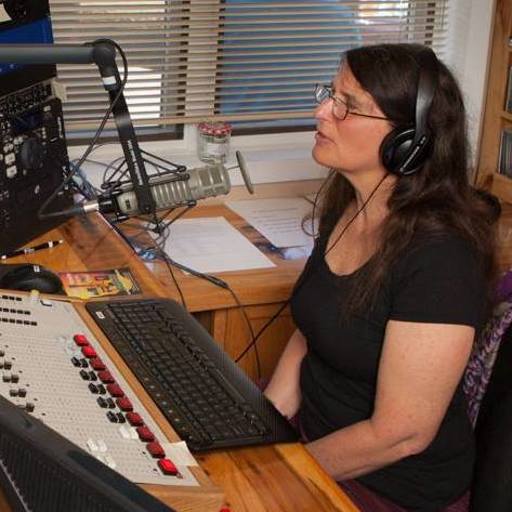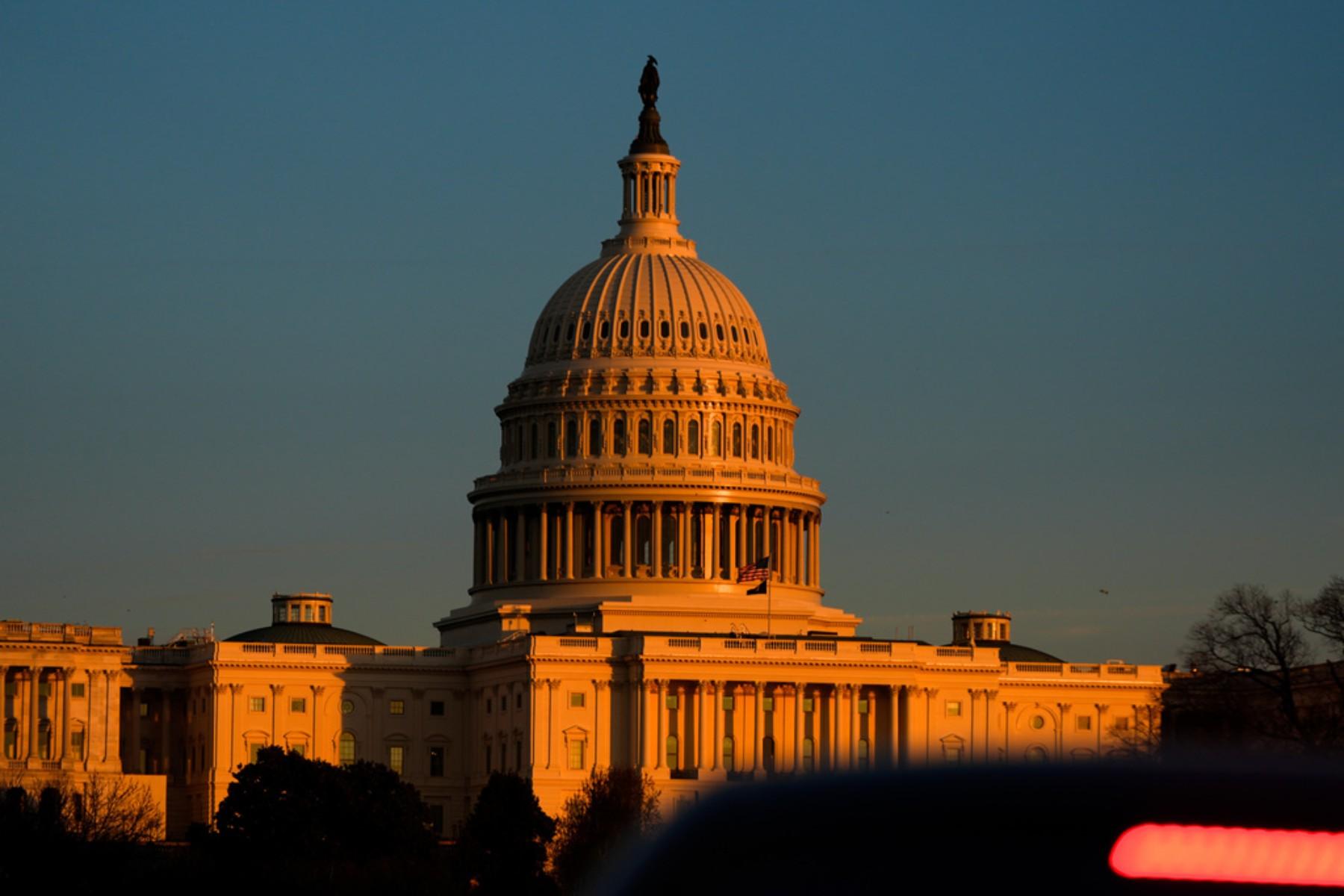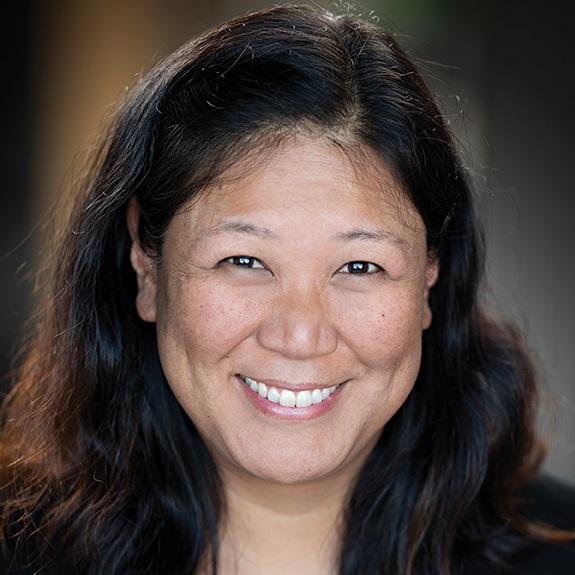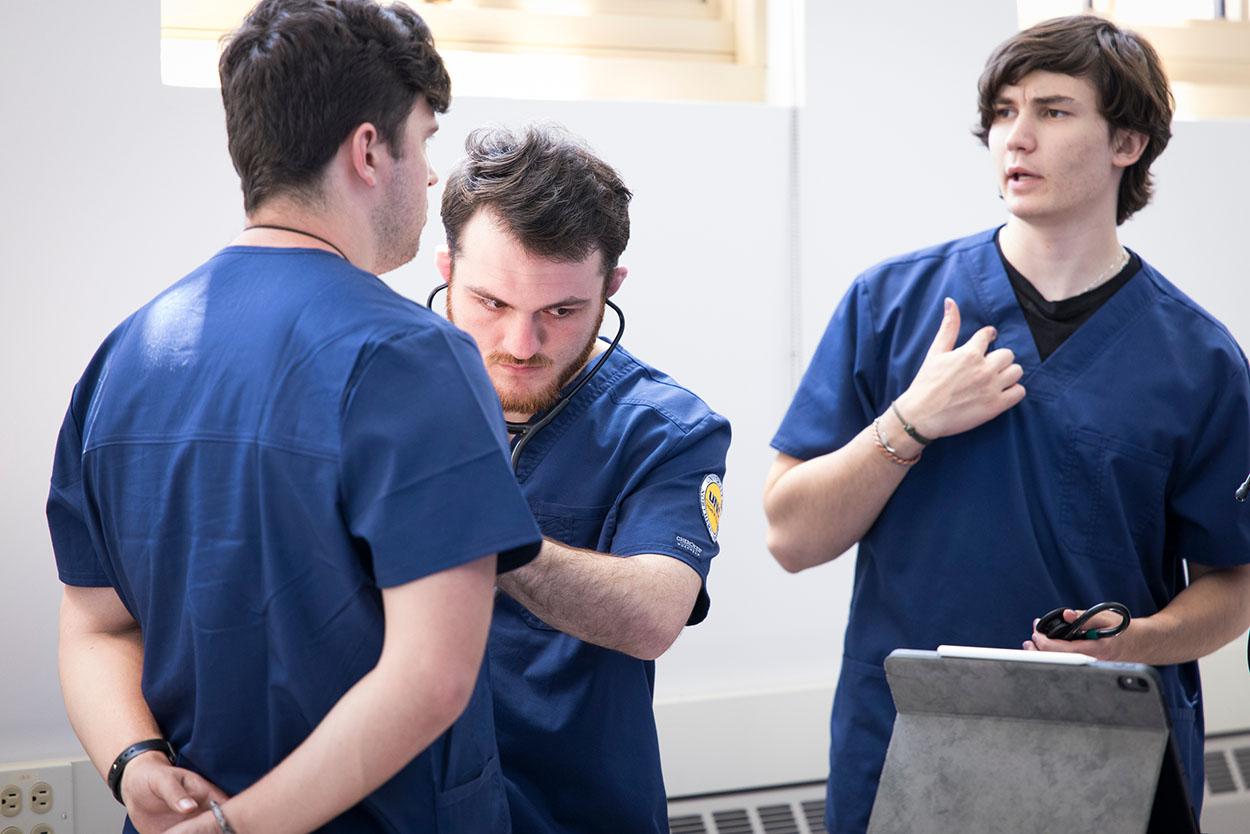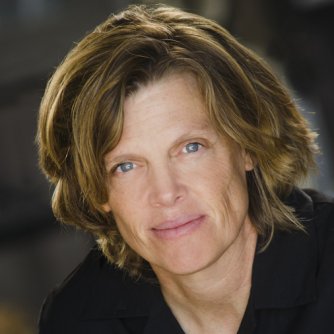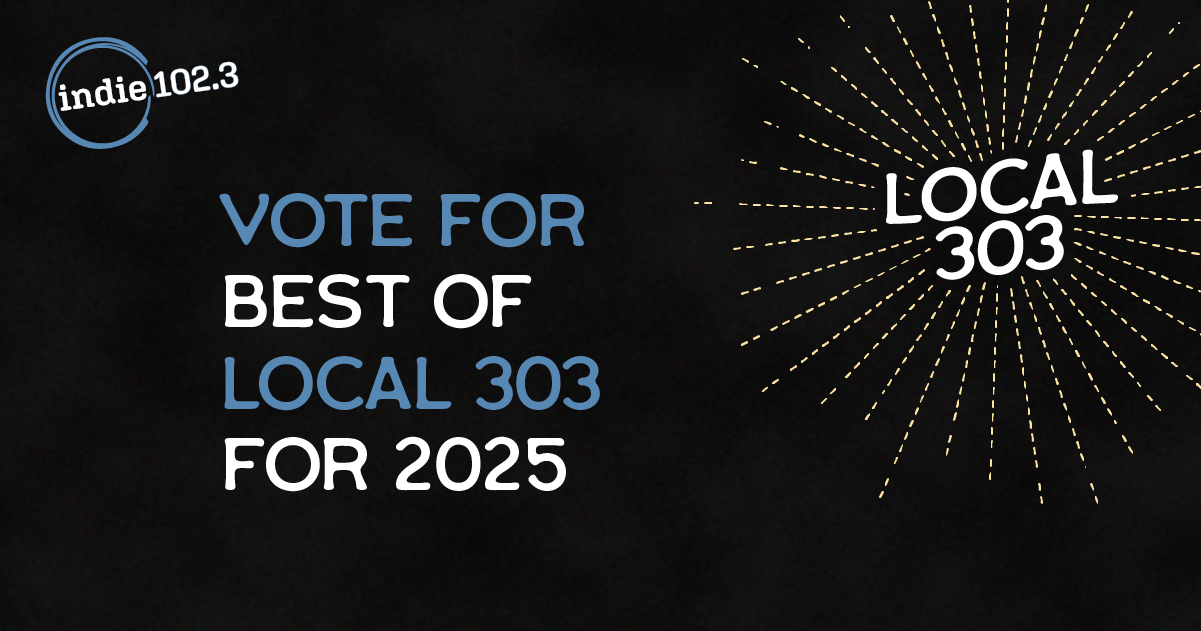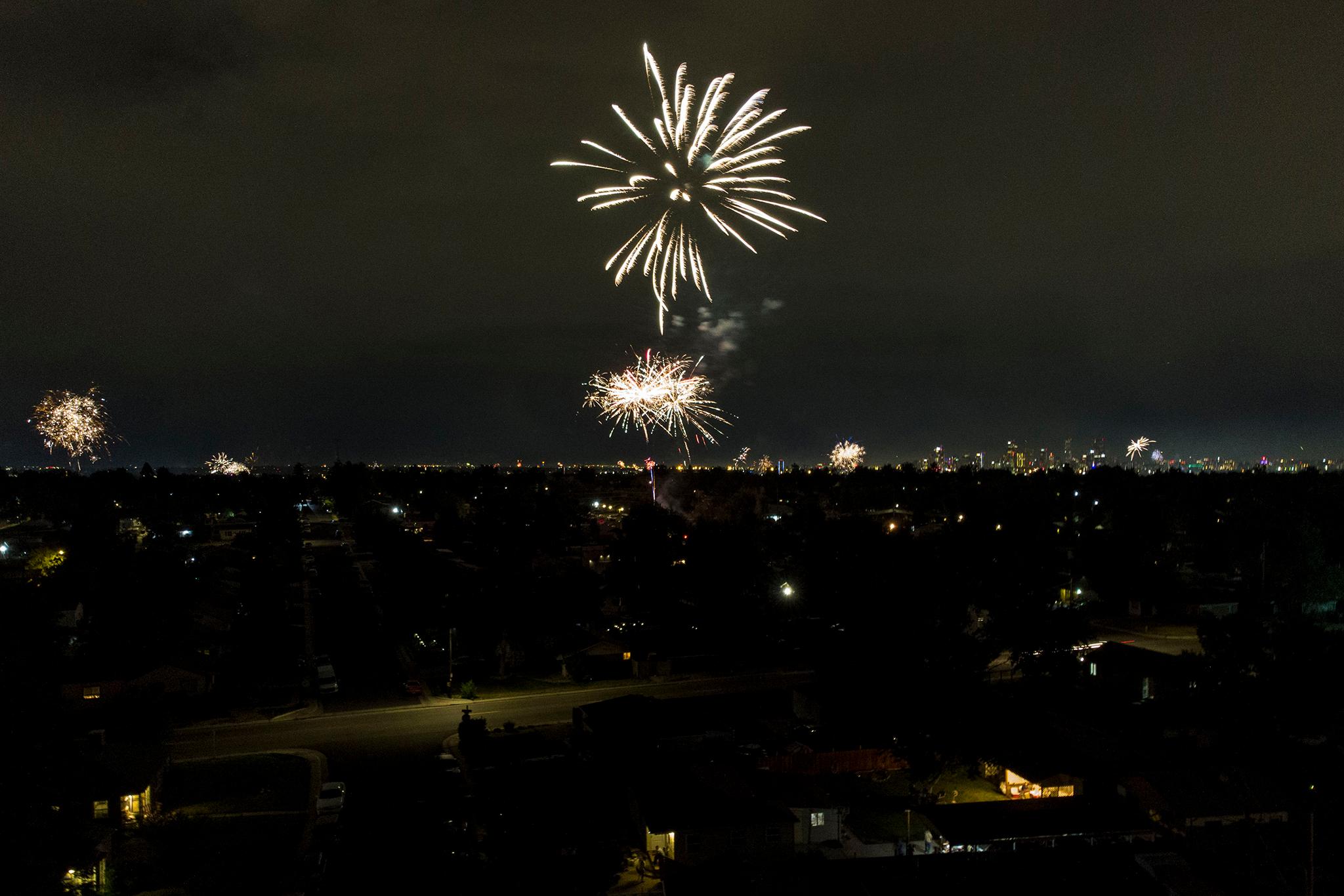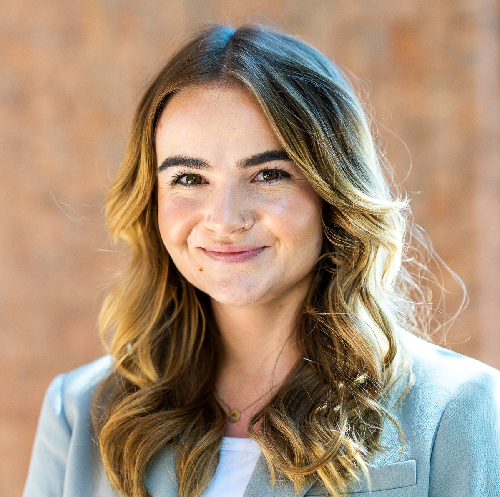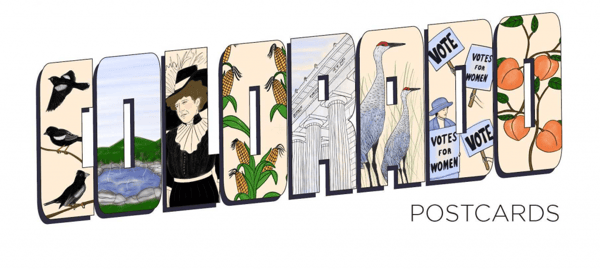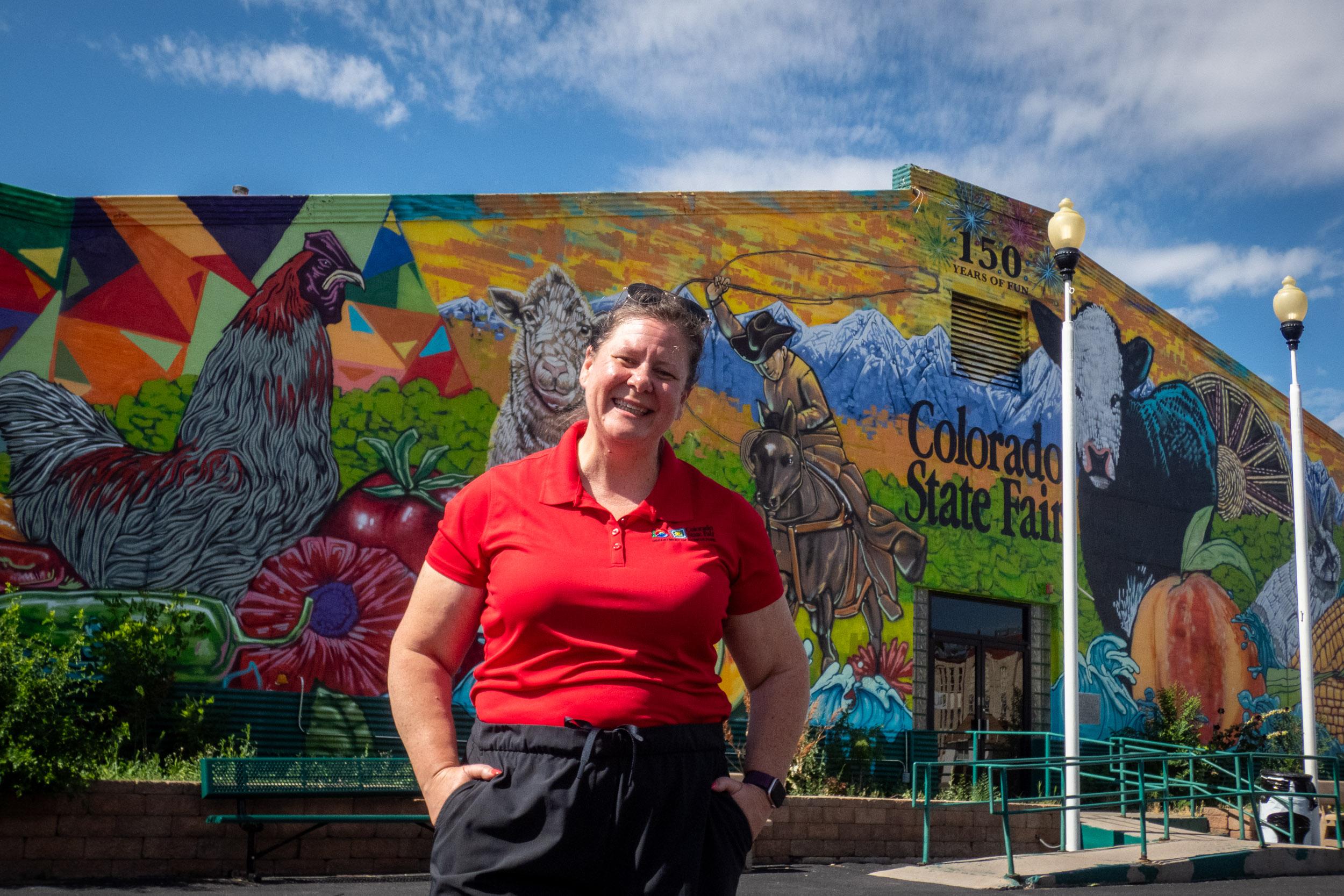
Andrea Wiesenmeyer took the reins as general manager at the Colorado State Fair late last year. She came to Colorado after managing the Jerome County Fair and Rodeo in Idaho and is now gearing up for her first opening day in Pueblo on August 22. The fair runs for 11 days, through Labor Day.
KRCC’s Shanna Lewis stopped by the fairgrounds to chat with Wiesenmeyer.
This interview has been edited for length and clarity.
KRCC's Shanna Lewis: What's on your to-do list here at the Colorado State Fair?
Andrea Wiesenmeyer: So really, right now, my to-do list in year one is listen, learn, observe. As I come in, I don't want to take and flip anything on its head. I don't want to start over on anything because I was only able to visit one day at the fair last year, and so don't have a really great scope or scale, and so it really is about listening. Observing my staff is great and so really allowing them to do what they do and do it well is my goal for year one.
Lewis: What are the challenges that you think you're going to need to address pretty quickly?
Wiesenmeyer: At fairs across the nation, not just here, one of the challenges always is going to be rising costs – cost of artists, rising cost of food for our vendors. The costs just continue to go up and up and up. As we look at construction, repairs, growth here on grounds, cost is definitely going to be a challenge. Marketing dollars, where our marketing dollars are going, how we're marketing and those competing dollars for all of the events that people can do is something else that we continue to take a look at and is always on our radar.
Lewis: There's been a master plan in the works for a while here to update things at the fairgrounds and make some changes. It's been underway for a while. How's it going?
Wiesenmeyer: We had some really early wins. That master plan, interestingly enough, is part of the reason I'm here, because they did have a great plan to continue to not only preserve traditions and legacies of the fair, but also look at that next generation and how we're going to sustain that.
So part of those early wins, the new gate five and the plaza. We continue to do infrastructure things that you're not seeing and improving buildings around the fairgrounds that are staying.
Right now we're really working towards a capital campaign phase so that we are able to take a hard look at some of our barns and some of our needs over in the livestock area, but not only with livestock and figuring out how to make a building that is definitely fair centered and livestock centered during those 11 days, but something that can be used for the community year-round.
Lewis: You mentioned some things that you can't see. What's been going on?
Wiesenmeyer: We've done some asphalting, done some upgrades to some of our 4H buildings. Additionally, we have been working on the Ag palace and air conditioning, roofing –some of those sorts of things that are a little bit creature comfort. You're not necessarily going to notice them, but hopefully you're going to feel them and it's just going to make you a little more comfortable while you're on the grounds.
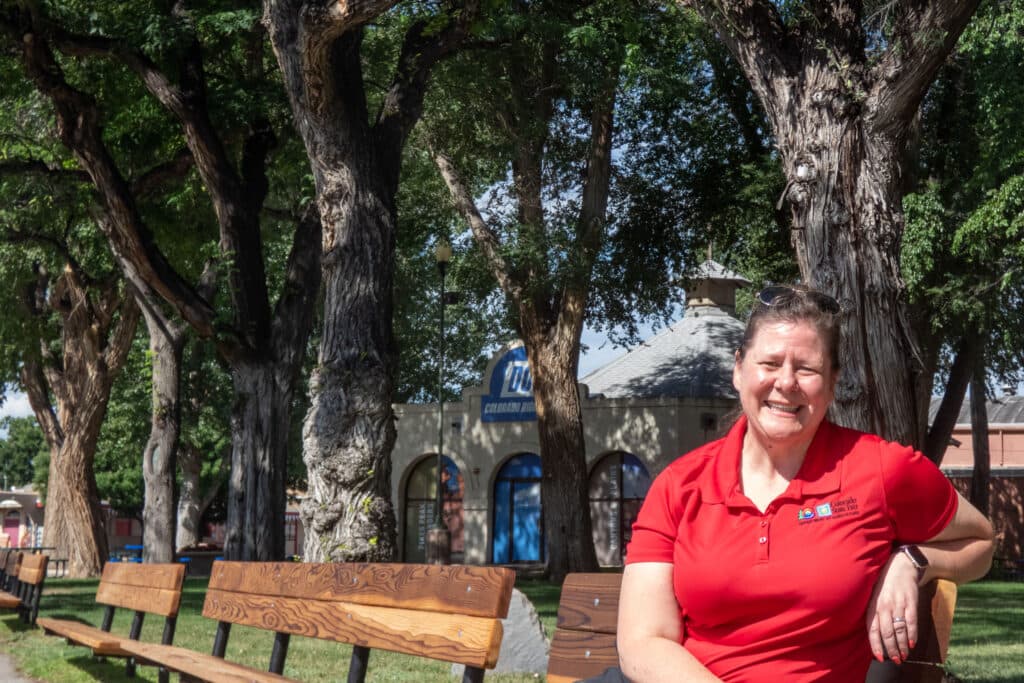
Lewis: What about attendance numbers? Do you think that the fair can continue to grow?
Wiesenmeyer: Attendance numbers for me are a tough measurement because of the weather. It is something we are always battling. Is it hot, is it rainy, is it windy? Weather is something we can't control, and those attendance numbers are definitely driven sometimes by those weather issues. So I don't know that they're a great measurement. Attendance numbers, we're not going to see them go down. You are going to see them fluctuate in that range of that 490,000 to 510,000 depending on what the weather is. But I think there's better ways that we can measure our success here at the fair.
Lewis: What kinds of ways would you measure success if you don't use attendance?
Wiesenmeyer: We want to look at time on grounds - the amount of time that people spend on grounds. We want to look at: did they have an enjoyable time, did they spend money with us? What was their spending while they were here? Obviously when we increase their time on grounds, they're probably going to have an extra lemonade or something like that. Community involvement–some of those sorts of things are definitely going to be our measures.
Lewis: My understanding is that fairs here and around the country are often subsidized to some degree by the state.
Wiesenmeyer: We don't want to depend on state dollars. We don't want to depend on federal dollars. Obviously, those are all fickle, and so we really want to make sure that we're doing the best we can and not depending on those external funds and taxing our fairgoers twice by depending on state funds, as well as then having them pay. The reality is that we're not there yet and we are supported by the state. We're very grateful for that.
As many fairs, both county and state fairs around the country, are supported by their local governments. We also have really, really great support from our city and county and those things help us be able to do bigger things and better things here at the fair. And that's part of the goal too, is not only if we're using those funds, what are we using them for, but to make sure that we're being able to pass what we're using those funds on for as a value to our fairgoers and making sure we're able to bring in things that are unique and fun for them.
Lewis: There have been efforts over the years to move the fair to Denver. What's your position on that?
Wiesenmeyer: For me, part of a fair is tradition and not only the tradition of you coming, but the tradition of maybe your parents took you and their parents took them. And when you take something out of the place that it's been for 150 years and you put it someplace new, you're losing a whole piece of what matters for people and fairs. Sometimes fairs have to move. It's not always that, but that tradition and that spot on the grounds, that special space, that special building. We want to preserve those histories and those traditions. So for me, Pueblo is always going to be the home of the State Fair
Lewis: With some of these historic buildings just trying to maintain the actual building itself…. Is that cost-effective?
Wiesenmeyer: Really not, unfortunately. There are buildings built here in the 1930s and 1940s that were built in a way, as we look at standards of today, they're just not able to cost effectively, maintain or create easy accessibility for animals and for people. So when we look at what that footprint looks like in the future, we really look at a building that we'd be able to be used not only for those 11 days (of the state fair) plus county fair, but be able to be used year-round space that really is going to serve the community well. To have some air conditioning, heating and maybe classroom space.
It's still all a little bit in the dream phase and discussion phase, but taking those buildings and molding that footprint into something that still does preserve that history, but also makes it a facility that's able to really be utilized. Unfortunately, with a lot of historic structures and structures of that age, it's more cost-effective to take that building down and put something new in its footprint than it is to try figure out how we can make it accessible and usable in that space for fairgoers.
Lewis: What are you most excited about for this year's fair?
Wiesenmeyer: I've gotten that question a lot and it's really hard for me to anticipate what I'm most excited about. Really in part, opening the gates that first day and having people come in and hosting my first fair here. Having that kid eat his first corn dog or see the carnival lights for the first time, or maybe go through the petting farm and get to interact with those animals.
I’m really, really, really excited about just getting the gates open. We're not counting, but we're counting down the days. We're doing some really, really cool things this year.
- Colorado names new head of the annual State Fair held in Pueblo
- Move over Great British Baking Show, this is how you judge blue ribbon winners at the Colorado State Fair
- Colorado State Fair marks 150 years in Pueblo: The past, present and future of the fair
- Why do people compete in the Colorado State Fair? For some it’s continuing tradition, for others it means trying new things
